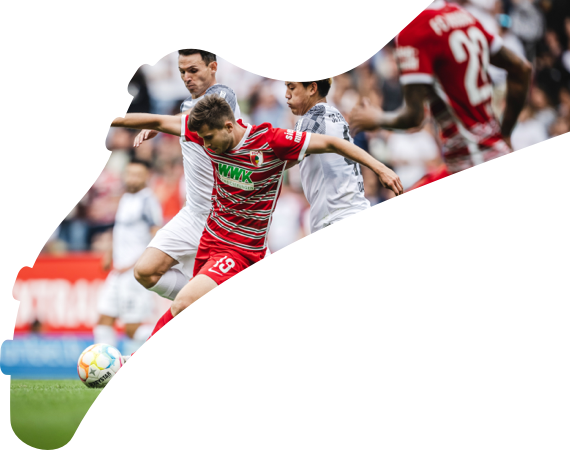
Why Julian Nagelsmann could unlock Alphonso Davies' potential at Bayern Munich
With Julian Nagelsmann to take over from Hansi Flick as Bayern Munich head coach, many players will be wondering what the young tactical genius has planned for them at the Allianz Arena. One of those is Alphonso Davies, whose potential could be fully unlocked by the incoming coach.
bundesliga.com looks at what Nagelsmann's arrival could mean for the Canadian…
Having swept the board with trophies in the last year or so, it's easy to forget that Davies is still only 20 and very much in the infancy of his career. Few will have doubted his unquestionable ability since joining Bayern from the Vancouver Whitecaps in January 2019, but more exciting still is the fact that he is yet to reach his prime.
That could come sooner rather than later with one of the best tactical innovators in world football taking over the Bayern helm for 2021/22. First, let's look at what Nagelsmann does with his current RB Leipzig team, and in particular his primary man on the left wing, Angelino.
What is Nagelsmann's approach?
Although he only turns 34 a few weeks after officially taking the helm in Munich, Nagelsmann has been coaching in the Bundesliga since February 2016 - when he became the youngest permanent head coach in the league's history - and overseen over 180 matches across five and a half seasons. He has guided Hoffenheim and Leipzig to top-four finishes in four of his five full campaigns in the league.
Over that time, he has earned praise for technical innovations, such as the giant screen at Hoffenheim's training ground or their Footbonaut, but also tactical ones. Although he has come to favour a back three and leans towards a 3-4-2-1 formation, he is one of the most unpredictable coaches in the game.
Watch: A tactical analysis of Nagelsmann

There has been one consistent factor in his final season at Leipzig, though, which is Angelino. Until a thigh injury at the end of February, the Spaniard had started all but one league game, and mostly did so as left wing-back. He is a defender by trade but has been converted into a winger with far greater attacking intent by Nagelsmann.
The 5'6" left-footer has been one of Leipzig's best players going forward in 2020/21, having a hand in eight goals across 24 appearances, taking 35 shots, laying on 65 for teammates and delivering 96 crosses from open play, of which 20 led to attempts on goal and four were put away.
They are perhaps surprisingly impressive figures for wide defender, but not when looking at Nagelsmann's approach. A lot of coaches will order their wing-backs to hug the touchline, making the pitch as wide and stretched as possible. Leipzig don't do that.
As demonstrated in the above video, Nagelsmann gets his Roten Bullen to flood the centre of the pitch. That is part of an intense pressing/gegenpressing method. Both wing-backs can be found infield and it can often have rewards with goals coming from winning the ball high up the pitch. Such pressing does come with the risk of being hit on the break, but Leipzig have only conceded twice from counter-attacks this Bundesliga campaign. By comparison, Bayern have been countered six times.
Watch: Analysing Angelino at Leipzig

The fact Angelino isn't restricted to the touchline and doesn't have players, either friend or foe, in front of him is what has allowed him to chalk up those eye-catching attacking statistics over the season. It also doesn't mean defensive duties are ignored. Leipzig have conceded the fewest goals of any team in the league, and the Spaniard boasts good numbers in terms of challenges won (53 per cent) and also averages over six interceptions per 90 minutes.
How has Davies played?
Davies' positional career has essentially done the reverse of Angelino, being converted from a winger to a left-back for both club and country. He is still used occasionally in more advanced roles, but a defensive berth has become customary now under Flick. Only twice has the outgoing coach started him at wing-back or as an outright winger.
Flick has also only deviated from a back four on two occasions during his tenure, meaning Davies automatically played in a more withdrawn role at a left-back - a position he has also had to share in competition with Lucas Hernandez.
The Canada international's first 25 Bundesliga matches saw him register a combined nine goals and assists as he was first used up front by Niko Kovac and then Flick's treble winners steamrolled everyone. However, his 20 appearances in 2020/21 have produced only one goal and two assists.
Watch: All of Davies’ goals and assists in 2019/20

That can come down to two factors. The first is that Bayern have attempted to tighten things up at the back after a prolonged run of games that saw the champions fall behind. That is also reflected over on the right, where Benjamin Pavard is yet to score or assist in the league this season.
The second is that Bayern play with genuine wingers in a combination of two of Leroy Sane, Serge Gnabry and Kingsley Coman. They are the primary attacking outlet out wide, as evidenced by the fact Davies has only delivered 22 crosses this season, which is a fraction over one a game. He is rarely found infield given Bayern's tendency to want to keep things stretched and wide.
Still, his goal threat is above average when looking at left-backs in teams who almost exclusively use a back four. There, only Ramy Bensebaini of Borussia Mönchengladbach can match Davies' goal involvements over the campaign.
Keeping with the Angelino comparison, the Bayern man averages over three times as many attacking take-ons per 90 minutes at almost seven. Those are where a player attempts to dribble past an opponent, which Davies has to do (and does do) far more often given his deeper starting position.
It's also based on confidence in his speed. The 20-year-old has the second-fastest top speed of any player in the division at 22.4 mph - some 1.7 mph quicker than his Leipzig counterpart.
What can Nagelsmann do for Davies?
Bayern have traditionally been a club that uses a back four and quick out-and-out wingers. They saw tactical experimentation for three years under Pep Guardiola that continued to herald domestic success. He also turned full-back Philipp Lahm into an accomplished central midfielder.
Nagelsmann has also used players in previously unaccustomed positions, such as playing Gnabry as a right wing-back, turning Marcel Sabitzer from a winger into his first-choice central midfielder, midfielder Kevin Vogt into a ball-distributing centre-back, Tyler Adams into an equally adept winger or right man of the back three.
When Bayern announced that Nagelsmann would take over, club president Herbert Hainer said he "stands for a new generation of coaches". It can be expected, then, that he will take the team into a new generation of tactics. Don't be surprised to see him create a squad that is just as comfortable in a 4-2-3-1 as a 3-4-2-1 or even others given the quality of players at his disposal.
And given his preference for wing-backs, he has the ideal candidate on the left in Davies. The Canadian covers an almost identical amount of ground per 90 minutes as Angelino, but Davies comes equipped with additional pace, used at both ends as shown by his higher amount of interceptions and the ability to take on a man to get in behind.
A first-choice back three would almost certainly feature Niklas Süle, new signing Dayot Upamecano and Hernandez. That alone frees up Davies to make the left wing his own, while there would also be no one else in front of him as there is now, allowing him to become the attacking outlet in a manner similar to Angelino.
If Nagelsmann also manages to instil a similar pressing game into his Bayern team, Davies would feature far more in central positions. So, not only would he start higher, but he'd be far more involved in the play in the areas where he can do the most damage.
The 2018 Major League Soccer campaign was the last full season Davies spent playing in the final third, and that saw the then 17-year-old record a very impressive eight goals and 10 assists in 31 games. His haul with the national team also shows what he's capable of in attack, scoring five of his seven goals for Canada when starting on the wing.
Nagelsmann has the tactical nouse, Davies the raw ability. It could just take a modern coach with new ideas to unlock the Canadian's full potential at Bayern.
Related news

Loïs Openda: The goal machine leading Leipzig's charge
Leipzig's push for a top-four finish has been fuelled by the goals of their star Belgian striker, who's enjoying an excellent first year in the Bundesliga...

Fantasy hidden gems for Matchday 29
Not sure which players should be in your Fantasy team? bundesliga.com's got you covered...

The race for European qualification
League leaders Leverkusen have secured their 2024/25 Champions League spot, but who else is in the mix to represent the Bundesliga in Europe next season?


